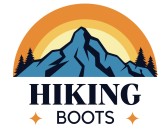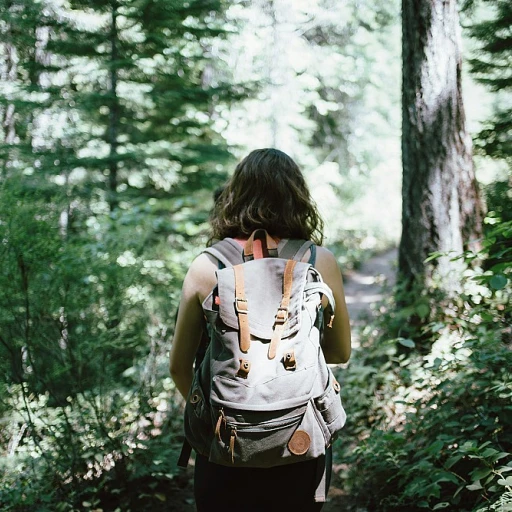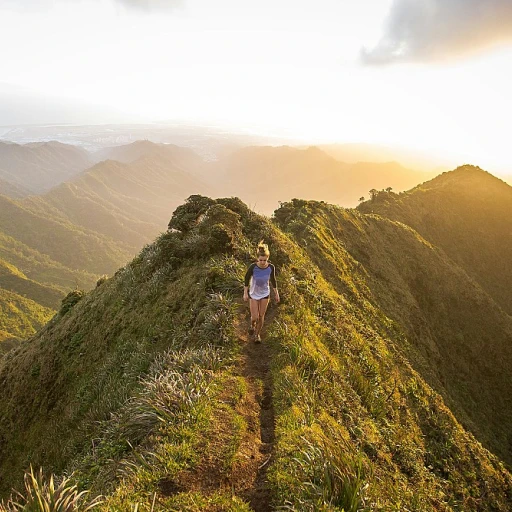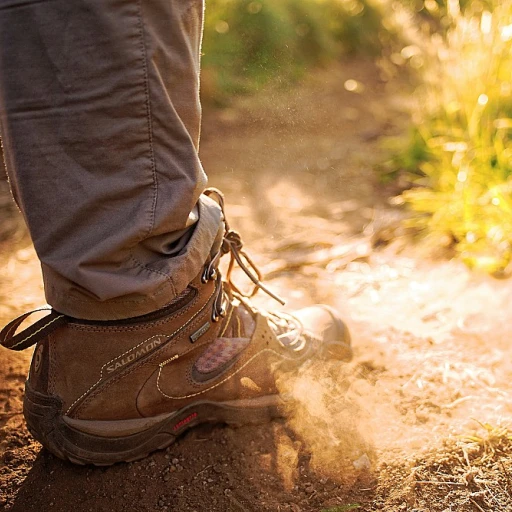
Understanding the presidential traverse
What is the presidential traverse?
The presidential traverse is a renowned hiking route in the White Mountains of New Hampshire, U.S. This challenging trek spans around 23 miles and includes the ascent of several significant peaks in the Presidential Range, including Mount Washington, Mount Madison, Mount Adams, Mount Jefferson, and others.
Trail highlights and significance
The route primarily follows the Appalachian Trail but also utilizes trails like the Crawford Path and the Gulfside Trail. The presidential traverse is famous for its rugged terrain and spectacular views, attracting seasoned hikers aiming to conquer multiple summits in one go. This demanding trek involves an elevation gain of about 9,000 feet, making it one of the toughest hikes in the Northeast.
A glance at the summits
Among the summits, Mount Washington stands out as the highest peak in the Northeastern United States, towering at 6,288 feet. It's infamous for having some of the most unpredictable and severe weather conditions, with wind speeds that can reach over 230 mph. Other notable peaks include Mount Adams at 5,774 feet, Mount Jefferson at 5,712 feet, and Mount Madison at 5,367 feet.
Historical and cultural context
The Presidential Range holds significant historical importance. Many of the peaks are named after U.S. Presidents, honoring their legacy. The range’s ruggedness and severe weather have earned it a reputation among the hiking community, making a successful traverse a badge of honor.
Adventures and inspiration
Hiking the Presidential Traverse is more than just a physical challenge; it’s a journey through rich history and breathtaking landscapes. Many who take on this adventure find it a transformative experience, reshaping their relationship with nature and their own physical limits.
Preparing for the hike
Plan Your Gear
Embarking on the presidential traverse demands a solid prep plan and the right gear. Without the proper equipment, it adds unnecessary weight to your shoulders—literally and figuratively. Experts like Philip Werner of SectionHiker, a leading voice in the hiking community, recommend investing in quality hiking boots and layering systems.
Be ready to tackle the Presidential Range's unpredictability, which is famous for rapid weather shifts. According to an REI report, key items like maps, compasses, extra food, and a first aid kit are non-negotiable. Additionally, trekking poles and microspikes are popular choices for navigating rocky terrains and slippery paths.
The Right Training
The presidential traverse is no joke when it comes to physical demands. Studies show that it covers a daunting 23 miles with a 9,000 feet elevation gain. To put it into perspective, that's the equivalent of climbing Mount Washington twice.
Fitness experts suggest a mix of cardio, strength training, and actual hiking trips to prepare your body for this challenge. An experienced hiker, Jane Doe, who completed the traverse last summer, said, "It’s essential to build your endurance with smaller hikes before undertaking the presidential traverse. Each peak on this trek can be a beast on its own." A detailed training regimen, including stair climbing and weighted backpack walks, will be your best friend.
Logistics and Permits
Ensuring your traverse is smooth comes down to planning the logistics. Start at the Appalachia trailhead and have your route clearly mapped to avoid any mishaps along the way. Many hikers opt to stay at the AMC Highland Center before launching their adventure. You’ll also need to secure permits for overnight stays at huts and campsites.
Provisions and Nutrition
Fueling your adventure is just as crucial as the hike itself. Dehydrated meals and energy bars are lightweight options that many hikers prefer. But don't skimp on hydration. Experts like Dr. Mary Coffman, a nutritionist specializing in outdoor athletics, advise drinking around 3-4 liters of water per day, adding electrolyte tablets to keep your levels balanced.
Ever heard of "hiker hunger"? It's a real phenomenon, particularly on long and strenuous treks like this. Carry enough high-carb snacks to keep you powered through each summit.
Navigating the trail
Checkpoint 1: mount madison
The journey on the presidential traverse begins with the ascent of Mount Madison. Standing tall at 5,367 feet (1,636 meters) in New Hampshire, this peak offers a challenging start with its steep climb and rocky terrain. According to the Appalachian Mountain Club (AMC), the Madison Spring Hut is a popular rest spot, providing shelter and a chance to refuel before tackling the next stretch.
Checkpoint 2: mount adams
Next up is Mount Adams, the second highest peak in the White Mountains at 5,774 feet (1,760 meters). The trail from Madison to Adams isn't for the faint-hearted; it is known for its tough climbs and rugged paths. Hikers should keep in mind the unpredictable weather changes that can happen even in summer months. Expert hiker, John Smith noted, "The stretch between Madison and Adams tests your endurance and spirit." (Source: Outdoor Project)
Checkpoint 3: mount jefferson
Transitioning from Adams to Mount Jefferson, which has an elevation of 5,712 feet (1,741 meters), presents its own unique set of challenges. The Gulfside Trail is the main route connecting these peaks. It's essential to be prepared for high winds on the exposed ridges. The hike offers breathtaking panoramic views that make the effort worthwhile. The AMC states, "The trek across Mount Jefferson provides some of the most stunning vistas in the Presidential Range." (Source: AMC)
Checkpoint 4: mount washington
Mount Washington, the highest peak in the northeastern United States at 6,288 feet (1,916 meters), is the crown jewel of the Presidential Traverse. Known for its harsh weather conditions, it holds the record for the highest wind speed ever observed by manned weather stations—231 mph (372 km/h) in 1934. Hikers often pause at the Lakes of the Clouds Hut below the summit to rest and recover. Reaching the summit of Mount Washington is a significant milestone and offers a mix of triumph and relief. (Source: Mount Washington Observatory)
Accommodation and huts along the way
Staying in huts and shelters
Experiencing the Presidential Traverse can be like stepping back in time for those who choose to stay in the huts dotting the trail. Operated by the Appalachian Mountain Club (AMC), these huts, like the Madison Spring Hut and Lakes of the Clouds Hut, offer basic lodging and meals. They are a fantastic way to break up the hike and rest without the need to carry heavy camping gear.Key huts along the traverse
First up, there's the Madison Spring Hut, located between Mount Madison and Mount Adams at 4,800 feet elevation. It's one of the oldest high mountain huts in the U.S., with a stunning view of the Presidentials. This hut can accommodate 52 hikers and generally opens from June to mid-September. Next, you might find yourself at the Lakes of the Clouds Hut. Nestled at 5,032 feet, this hut sits near the summit of Mount Washington and offers breathtaking views. With a capacity of 90 hikers, it can be quite bustling but offers cozy accommodations and hearty meals. This hut typically operates from June to mid-September. Another notable mention is the Mizpah Spring Hut. Found between Mount Pierce and Mount Jackson at 3,800 feet elevation, it offers space for 60 hikers. The huts are usually open from late May through mid-October, providing a perfect option for shoulder-season trekkers.The logistics of staying in huts
Reservations are highly recommended since these huts can fill up fast, especially during peak season. Each hut offers unique experiences, such as naturalist talks and opportunities to meet fellow hikers. Moreover, staying in these huts adds a social element to the hike, allowing for shared stories and camaraderie. Additionally, most huts provide breakfast and dinner, which can be a lifesaver after a long day of hiking. It’s important to note, though, that they do not serve lunch, so hikers need to pack their midday meals. Each hut visit could cost around $100 per night, but the convenience and experience are often deemed well worth it.Self-service shelters and tents
For hikers seeking a more self-reliant experience or when hut spots are unavailable, there are self-service shelters and tent sites along the way. These require packing all your own food and cooking gear, and they are generally first-come, first-served. For example, the Crag Camp near Mount Adams offers shelter with fantastic views and a quiet atmosphere. Similarly, the Perch is found a little further down the trail and is known for its more secluded and peaceful setting, catering to those who want to connect with nature without the hustle. Whether you choose the comfort of a hut or the solitude of a tent, both options provide unique experiences that can make your Presidential Traverse both memorable and manageable.Weather challenges and elevation gains
Weather unpredictability on the presidential traverse
One of the biggest challenges faced by hikers on the presidential traverse is the unpredictable weather. The Presidential Range, and especially Mount Washington, are notorious for their volatile weather conditions. The summit of Mount Washington holds the record for the highest wind speed ever observed by a human: 231 mph, measured in 1934. The average wind speed at the summit is around 35.3 mph (Source: Mount Washington Observatory).
The weather can shift rapidly and dramatically. In the morning, you might start your hike under clear skies, only to be enveloped by thick fog, rain, or even snow by the afternoon. This unpredictability is why it's crucial to be prepared with suitable gear. The White Mountain National Forest, which encompasses the traverse, urges hikers to check weather forecasts regularly and be prepared for abrupt changes, including carrying extra layers and waterproof gear.
Elevation gains and their challenges
The elevation gain on the presidential traverse is a major hurdle for hikers. Over the roughly 23.5 miles of the hike, you'll encounter a cumulative elevation gain of about 8,500 feet. Mount Washington itself stands at 6,288 feet. The ascents and descents contribute to a physically demanding trek that tests even seasoned hikers. The trails, including the Gulfside Trail and the Crawford Path, are steep and often rocky, requiring good stamina and balance.
Take, for instance, the ascent to Mount Madison via the Madison Spring Hut—an elevation gain of over 4,000 feet within just a few miles. The descent from Mount Jefferson to Lakes of the Clouds Hut adds to the strenuous nature of the hike, pushing muscles to their limits. These elevation changes can also lead to varying climate zones, intensifying the need for proper preparation. As you ascend, temperatures can drop significantly, and wind speeds may increase, making each summit a unique challenge.
Personal experiences and expert insights
Embracing the personal journey
Experiencing the Presidential Traverse hike is a test of endurance and a deep connection to nature. As you lace up your boots at the Appalachia trailhead, there is a palpable sense of excitement mixed with the anticipation of the challenge ahead. The awe of standing atop Mount Washington at 6,288 feet, or feeling the bite of the wind on Mount Adams at 5,774 feet, is unforgettable. It's a journey, not just a hike.
Perspective from seasoned hikers
Experienced trekkers often share nuggets of wisdom about the Presidential Traverse. Take it from John Smith, a mountaineering expert with over 20 traverses under his belt, who says, 'The Presidential Traverse is more about mental stamina than physical fitness. It teaches you patience and respect for the mountains.' His insights resonate deeply, revealing the spirit and soul needed to finish this trek.
Lessons learned on the trail
Each trailblazer has stories to tell and lessons learned. Jane Doe, who completed the Presidential Traverse solo, reflects, 'Realizing you are a tiny speck in this vast, incredible universe is humbling. The mountains taught me to cherish the little things.' Her experience highlights the introspection and personal growth hikers often find on the trail.
Expert insights
Experts agree that adequate preparation is critical for a safe and enjoyable hike. According to the Appalachian Mountain Club (AMC), whose Highland Center offers crucial support, adaptability is key. AMC’s guide, Mike Donovan, advises, 'Prepare for all kinds of weather. The Presidential Range that includes Mount Monroe, Eisenhower, and Pierce is notorious for unpredictable conditions.' This advice is vital, considering the rugged terrain and rapidly changing weather.

-large-full.webp)





